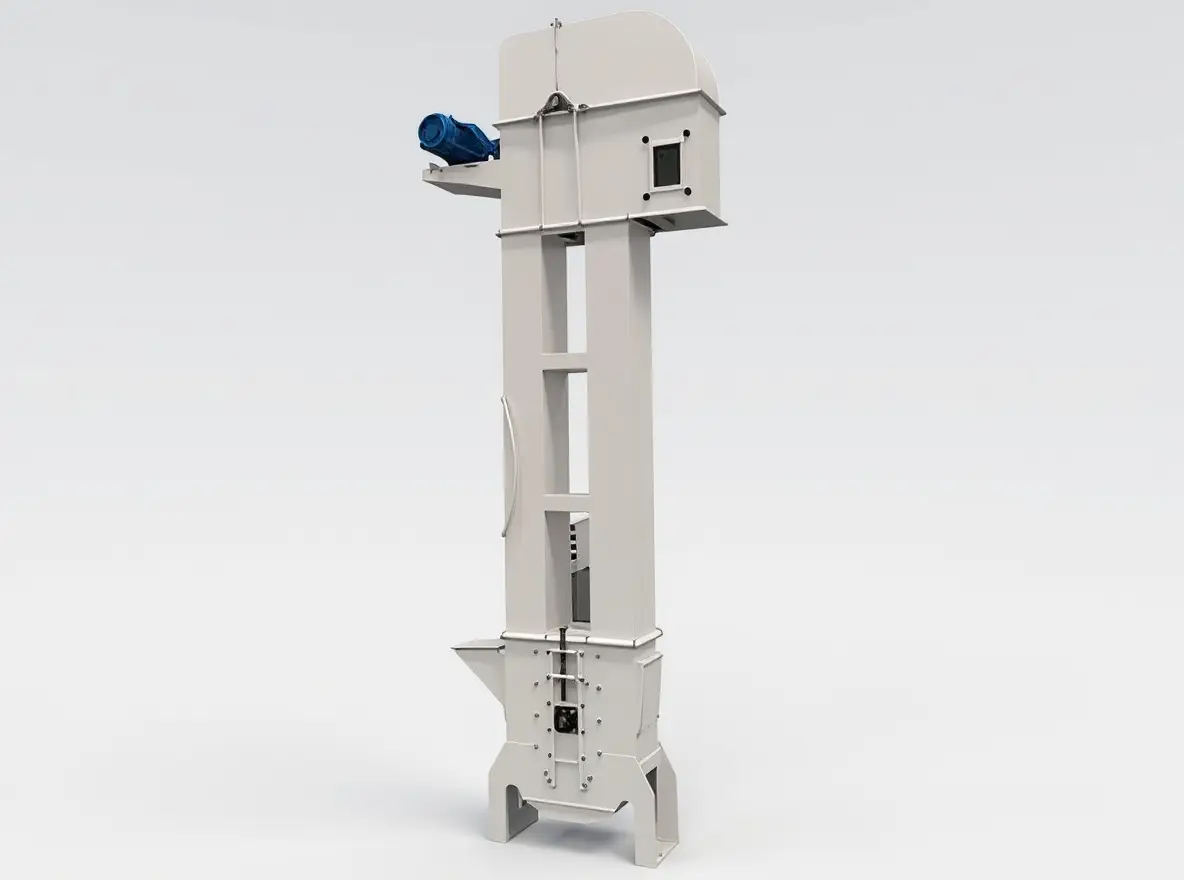Service
Cement Bucket Elevator
Essential Vertical Conveying Equipment for Cement Plants
A cement bucket elevator is a type of mechanical conveying equipment widely used in cement plants for the vertical lifting of powdery and granular materials such as limestone, coal, gypsum, clinker, clay, raw meal, cement, and pulverized coal. This equipment typically works in conjunction with other critical cement machinery like crushers, raw mills, and cement mills to ensure seamless material flow within the production process.

Cement Bucket Elevator:
The primary function of a bucket elevator is to lift materials from a lower point to a higher elevation efficiently. Materials are fed into a hopper, usually through a vibrating table, and the elevator continuously and automatically moves the material upward at an adjustable conveying speed. The lifting height can be customized according to plant requirements, and the hopper is designed and manufactured to fit specific operational needs.
Types of Bucket Elevators
Bucket elevators come in various types to suit different operational demands. The two main categories are chain bucket elevators and belt bucket elevators. Based on discharge methods and speed, they can be further classified into centrifugal discharge, gravity discharge, and mixed discharge models. At DMPCR both chain bucket elevators and TGD series elevators are available, allowing customers to select the most suitable type for their specific application.
In addition to complete bucket elevator units, we supply a range of spare parts such as tail sprockets, buckets, Flender gearboxes, steel chains (NE chain, NSE chain, NBH chain), bucket bolts, hydraulic couplings, and belt joint assemblies to ensure ongoing maintenance and smooth operation.
NE Chain-Type Bucket Elevator
The NE series chain-type bucket elevator is an advanced vertical lifting system developed using foreign technology and widely adopted in China and worldwide. It is suitable for lifting various bulk materials including ores, coal, cement clinker, grain, and fertilizer. This type of elevator is recognized for its high efficiency and energy savings, making it an ideal replacement for older HL and TH chain hoists.
NE series elevators feature a plate chain with gravity discharge design, ensuring reliable operation and stable performance. Their construction includes an upper casing assembled with the main shaft, reducer, motor, and coupling; multiple middle casings added to meet height requirements; and a bottom casing with a tensioning device and driven shaft. Inspection doors on the side casings facilitate cleaning and maintenance. The steel plate chain moves fixed buckets, which are attached securely with nuts, with the number of chains and buckets corresponding to the elevator’s height.
TGD Chain-Type Bucket Elevator
The TGD steel wire belt bucket elevator is another type of bucket elevator offered by AG CEMENT. Characterized by large throughput, compact size, low power consumption, and reliable operation, this elevator is designed for lifting dry powder and small granular materials. It enjoys wide usage in industries such as building materials, metallurgy, chemicals, food processing, and electric power.
The TGD elevator’s traction system uses a high-strength steel wire rope core rubber belt, which offers advantages over chain drives. This belt reduces dynamic loads, making the system lighter, more stable, and capable of higher speeds and greater productivity. Its elasticity helps reduce stress when loading materials into the hopper and contributes to a smaller overall machine footprint and weight. Thanks to the robust steel wire rope core, the TGD elevator can achieve greater lifting heights and conveying capacities, offering excellent development potential for modern cement production facilities.
In summary, cement bucket elevators are vital components for vertical material handling in cement plants and many other industries. Whether selecting a chain type or a belt type elevator, these systems provide efficient, reliable, and customizable solutions to meet varying production needs. With advanced designs like NE and TGD series, users benefit from improved efficiency, lower energy consumption, and long service life, ensuring continuous and optimized plant operations.
